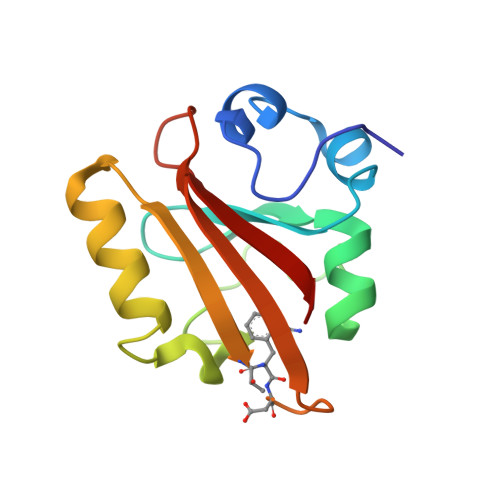Nitrile Infrared Intensities Characterize Electric Fields and Hydrogen Bonding in Protic, Aprotic, and Protein Environments.
Weaver, J.B., Kozuch, J., Kirsh, J.M., Boxer, S.G.(2022) J Am Chem Soc 144: 7562-7567
- PubMed: 35467853
- DOI: https://doi.org/10.1021/jacs.2c00675
- Primary Citation of Related Structures:
7SJJ, 7SPV, 7SPW, 7SPX - PubMed Abstract:
Nitriles are widely used vibrational probes; however, the interpretation of their IR frequencies is complicated by hydrogen bonding (H-bonding) in protic environments. We report a new vibrational Stark effect (VSE) that correlates the electric field projected on the -C¡ÔN bond to the transition dipole moment and, by extension, the nitrile peak area or integrated intensity. This linear VSE applies to both H-bonding and non-H-bonding interactions. It can therefore be generally applied to determine electric fields in all environments. Additionally, it allows for semiempirical extraction of the H-bonding contribution to the blueshift of the nitrile frequency. Nitriles were incorporated at H-bonding and non-H-bonding protein sites using amber suppression, and each nitrile variant was structurally characterized at high resolution. We exploited the combined information available from variations in frequency and integrated intensity and demonstrate that nitriles are a generally useful probe for electric fields.
Organizational Affiliation:
Department of Chemistry, Stanford University, Stanford, California 94305-5012, United States.

















